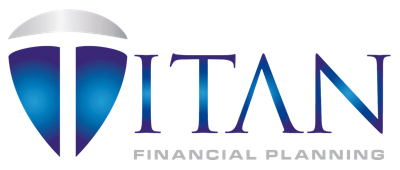Stocks continue to ignore bonds
- Global shares rose 1.8% and 4% in hedged and unhedged terms, respectively. Growth stocks outperforming following strong earnings results by tech companies such as Alphabet (owner of the Google search engine).
- Australian shares underperformed global shares, rising 1.1% in July. The leading sectors were materials (up 7.1%) buoyed by higher commodity prices and industrials (up 4.2%). Technology was one of the worst performers (down 6.9%).
- The Australian dollar (AUD) fell 1.8% against major currencies and 2.1% against the US dollar. The persistence of the Delta strain domestically with lockdowns in both NSW and Queensland (the latter being particularly prolonged) cast a shadow of the strong economic recovery. This reduced the likelihood of rate increases in the near term and soured investor sentiment towards the AUD.
- Fixed income returns continued to recover as bond yields fell. The growth of the Delta strain both at home and overseas has weakened optimism over global growth, underpinning bond demand. Bonds and stocks are arguably suggesting different views of the world, the former pessimistic (bond yields falling), the latter, optimistic (stocks going up) with the truth likely to play out over the coming year.
As the lockdowns extend in Australia
Globally
- Global business surveys suggest economic growth momentum remains positive but slowing, led by the US and Europe.
- The UK experience with Delta stoked vaccine optimism with new daily cases materially declining from a recent 21 July peak of 47,723 per day to 25,934 per day in early August.
Locally
- Inflation figures surprised on the upside with 3.8% growth for the year to June. This was driven by a strong rally in oil prices as demand recovered globally. Underlying inflation measures was subdued at 1.75%.
- The spread of the Delta variant domestically has seen lockdowns in Sydney extended until 28 August and is expected to weigh on the economy and jobs market with an outbreak in Queensland prompting new restrictions.
- Additional government support was introduced albeit dwarfed by 2020 efforts.
- The RBA left its cash rate unchanged and flagged expectations of negative economic growth in the September quarter but anticipated an economic bounce back. It also reiterated its planned reduction of bond purchasing from early September.
Major asset class performance
| Asset classes | 1 month % |
1 year % |
5 years (p.a.) % |
| Australian shares | 1.1 | 28.6 | 10.0 |
| Australian small companies | 0.7 | 32.3 | 9.6 |
| Global shares (hedged) | 1.8 | 33.7 | 13.9 |
| Global shares (unhedged) | 4.0 | 31.8 | 15.2 |
| Global small companies (unhedged) | 1.4 | 42.2 | 13.7 |
| Global emerging markets (unhedged) | -4.7 | 17.7 | 11.1 |
| Global listed property (hedged) | 3.9 | 33.6 | 4.5 |
| Cash | 0.0 | 0.1 | 1.3 |
| Australian fixed income | 1.8 | 0.5 | 3.4 |
| International fixed income | 1.3 | 0.1 | 3.0 |
| Source: Bloomberg & IOOF, 31 July 2021
Indices used: Australian Shares: S&P/ASX 200 Accumulation Index, Australian small companies: S&P/ASX Small Ordinaries Accumulation Index, Global shares (hedged): MSCI World ex Australia Net Total Return (in AUD), Global shares (unhedged): MSCI World ex Australia Hedged AUD Net Total Return Index; Global small companies (unhedged): MSCI World Small Cap Net Total Return USD Index (in AUD); Global emerging markets (unhedged): MSCI Emerging Markets EM Net Total Return AUD Index; Global listed property (hedged): FTSE EPRA/NAREIT Developed Index Hedged in AUD Net Total Return; Cash: Bloomberg AusBond Bank Bill Index; Australian fixed income: Bloomberg AusBond Composite 0+ Yr Index; International fixed income: Bloomberg Barclays Global Aggregate Total Return Index Value Hedged AUD Please note: Past performance is not indicative of future performance |
|||
Currency markets
| Exchange rates | At close on 31/7
% |
1 month change % |
1 year change % |
| USD/AUD | 0.73 | -2.1 | 2.8 |
| Euro/AUD | 0.62 | -2.2 | 2.0 |
| Yen/AUD | 80.6 | -3.3 | 6.6 |
| Trade weighted index | 61.6 | -1.8 | -0.5 |
| Source: Bloomberg & IOOF, 31 July 2021.
All foreign exchange rates are rounded to two decimal places where appropriate. Please note: Past performance is not indicative of future performance.
|
|||
